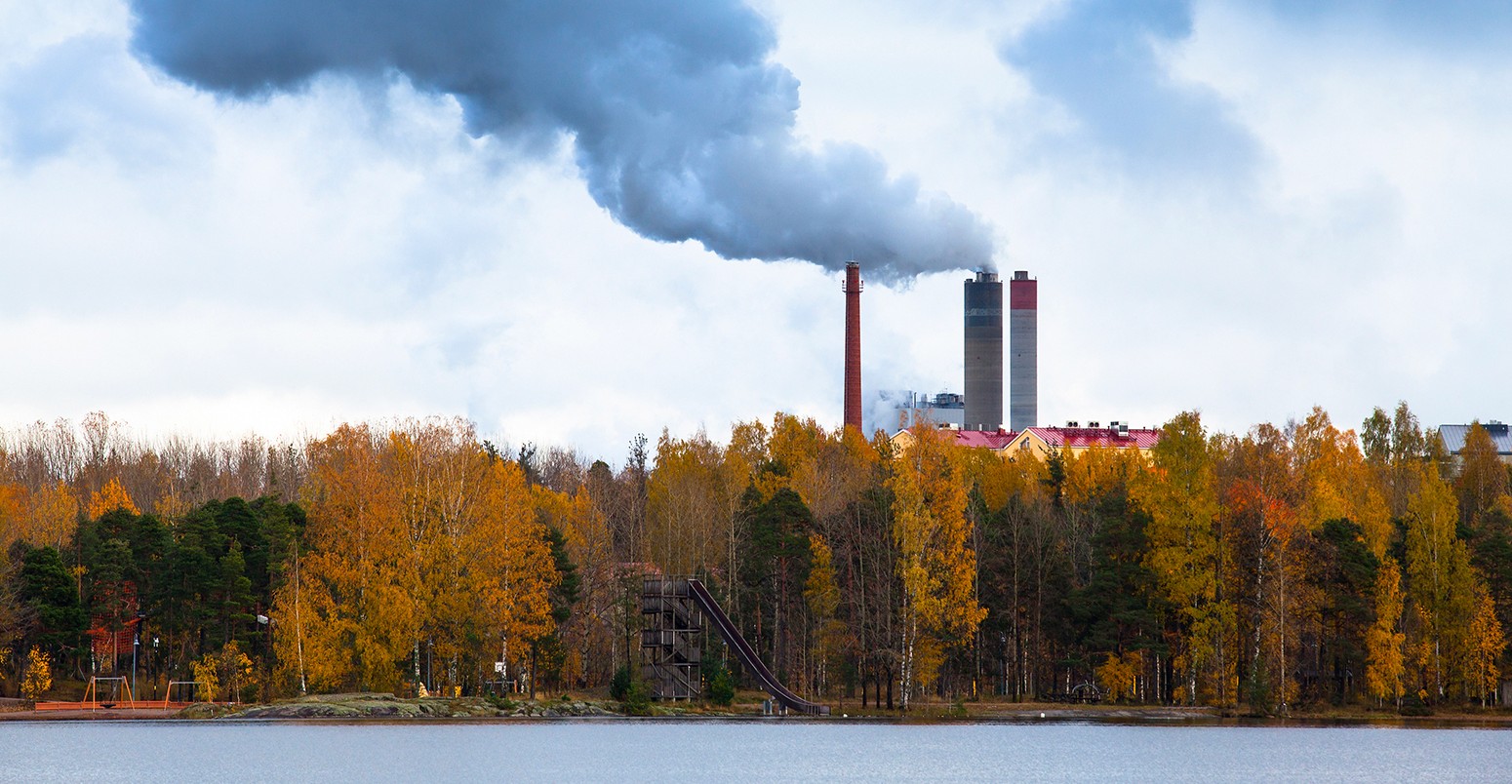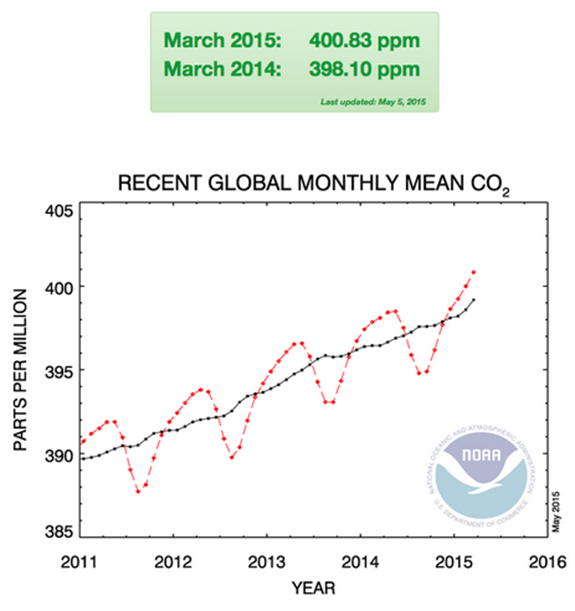
Monthly global carbon dioxide tops 400ppm for first time
Roz Pidcock
05.06.15Roz Pidcock
06.05.2015 | 10:30pmThe US National Oceanic and Atmospheric Administration (NOAA) today announced that the monthly global average concentration of carbon dioxide surpassed 400 parts per million (ppm) in March 2015 for the first time since measurements began.
The average carbon dioxide concentration across the globe was 400.83 ppm, reported NOAA.
If this news sounds familiar, it might be because this isn’t the first time you’ve heard scientists mention the 400 ppm mark in recent years.
In the spring of 2012, NOAA reported all of its Arctic stations were measuring local concentrations of more than 400 ppm.
In 2013, the daily carbon dioxide concentration surpassed 400 ppm mark at the Mauna Loa Observatory, where scientists have been monitoring levels since the 1950s.
But March 2015 is the first time the average carbon dioxide concentration right across the globe has been more than 400 ppm for an entire month.

Global monthly carbon dioxide concentration. The dashed red line represents monthly mean values while the black line has had the seasonal cycle removed. Source: NOAA/ESRL
Plants and trees absorb carbon dioxide as they grow. This means concentrations of the gas rise and fall with the seasons, reaching a peak in May just before summer in the northern hemisphere. So, while carbon dioxide concentrations won’t stay above 400 ppm for the whole year, we can expect them to remain high throughout May, said NOAA scientists today.
You can see the undulations of the seasonal cycle superimposed on top of the long-term rise in carbon dioxide over the past 35 years in this handy NOAA video.
Scientifically important or symbolic?
In terms of the global impacts of climate change, scientists don’t attach much specific importance to the 400 ppm threshold. In other words, the consequences of climate change are not expected to change dramatically now that we’ve reached 400 ppm.
And with emissions continuing to rise year on year, there’s a certain inevitability about passing the 400 ppm mark says Dr Pieter Tans, who leads NOAA’s Carbon Cycle Greenhouse Gases Group. He says:
“It was only a matter of time that we would average 400 parts per million globally.”
Professor Richard Allan from the University of Reading makes a similar point, telling Carbon brief recently that it’s not surprising we find ourselves here. He says:
“[Approaching 400 ppm] is not significant in itself since a rise in global carbon dioxide concentrations above 400 ppm is inevitable”.
While it carries no specific scientific meaning and has been on the cards for a while, passing 400 ppm is “a significant milestone”, says Tans, because it hammers home how much human activity has contributed to atmospheric carbon dioxide levels – and how quickly. He says:
“This marks the fact that humans burning fossil fuels have caused global carbon dioxide concentrations to rise more than 120 parts per million since pre-industrial times â?¦ Half of that rise has occurred since 1980.”
Dr Ed Hawkins, a climate scientist at the University of Reading, told The Guardian:
“This event is a milestone on a road to unprecedented climate change for the human race. The last time the Earth had this much carbon dioxide in the atmosphere was more than a million years ago, when modern humans hadn’t even evolved yet.”
In a year where hopes are high for governments to agree a deal to limit global emissions, surpassing the 400 ppm mark could well have more political significance than scientific. Hawkins adds:
“Reaching 400 ppm doesn’t mean much in itself, but the steady increase in atmospheric greenhouse gases should serve as a stark reminder of the task facing politicians as they sit down in Paris later this year.”
Professor Joanna Haigh, physicist and co-director of the Grantham Institute for Climate Change at Imperial College, tells Carbon Brief that passing 400 ppm highlights to world leaders the “grim reality” of global carbon dioxide concentration. She says:
“That value in itself was not unanticipated but, worryingly, it has come even sooner than expected, indicating that the rate of increase is rising. The urgent need to address carbon dioxide emissions, in order to avoid dangerous future climate change, is very clear.”
How do scientists measure carbon dioxide?
NOAA scientists collect air samples from 40 stations all over the world and measure the number of molecules of carbon dioxide relative to the total number of molecules, after water vapor has been removed. This gives them what’s known as the dry air fraction of carbon dioxide. Today’s press release from NOAA explains:
“NOAA and partner scientists collect air samples in flasks while standing on cargo ship decks, on the shores of remote islands and at other locations around the world.”
Dr Ed Dlugokencky, the NOAA scientist who manages the global network of monitoring stations, explains why it’s important to get information from remote locations:
“We choose to sample at these sites because the atmosphere itself serves to average out gas concentrations that are being affected by human and natural forces. At these remote sites we get a better global average.”
The best known of the world’s carbon dioxide monitoring stations is the Mauna Loa observatory, which sits on the side of a Hawaiian volcano. Mauna Loa is home to the iconic Keeling curve – named after C. David Keeling who started the measurements in 1958. It is the longest standing continuous record of atmospheric carbon dioxide.

